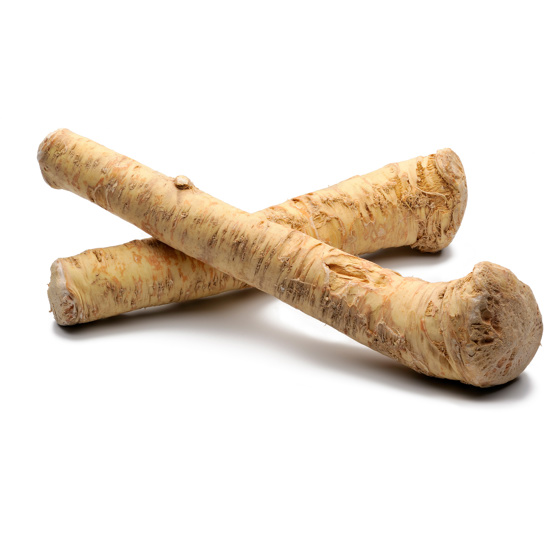Storage advice
If you store horseradish in the fridge, you can enjoy it for a long time.
Tastemaker à la carte

The name horseradish is a big clue about the flavour of this root vegetable. It is a distant relative of the radish. Its flavour is also reminiscent of mustard. Be careful when using horseradish - it delivers a kick!
The strong flavour of EAT ME horseradish will bring some heat to a variety of dishes. Horseradish is making a serious reappearance in culinary circles. From being one of the overlooked vegetables, horseradish has become a trendy ingredient with foodies. And not without good reason. Its skin hides a creamy white root.
The mustardy taste of horseradish makes it a flexible friend in the kitchen. It is delightful partner for roast beef or salmon. And the sharp taste will certainly liven up a sauce. Or make an original horseradish dip.
Peel horseradish before using it. The root can then be grated. Don't want the flavour to dominate the dish? Cook briefly to temper the sharpness. It can also be baked in the oven.
If you store horseradish in the fridge, you can enjoy it for a long time.
A good choice to put on the menu more often! Horseradish is rich in vitamin C, and this contributes to a good immunity– in times of physical exertion too. It is also a source of minerals. Potassium for example, is good for the nervous system. And copper, which helps our connective tissue to keep the skin supple.
EAT ME horseradish comes from Austria. It is a plant with a remarkable growth habit: underground. All you need is a small root cutting pushed into the soil and a new plant will quickly develop above ground. So fast in fact, that the patch of soil where the roots grow can soon become overgrown. Horseradish is perennial but the leaves die off in winter.